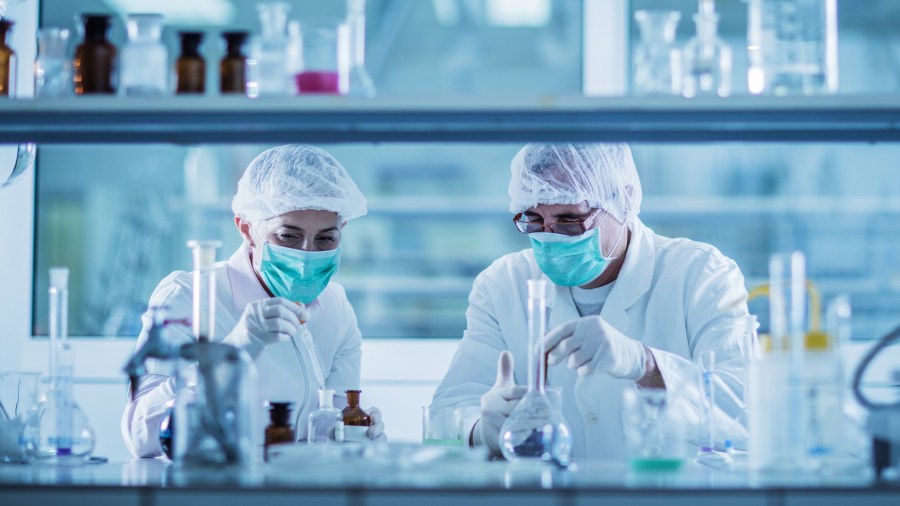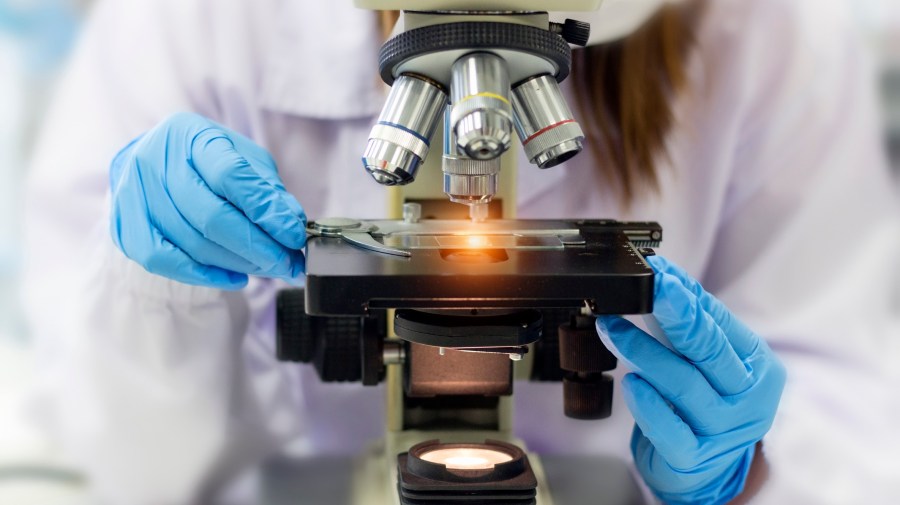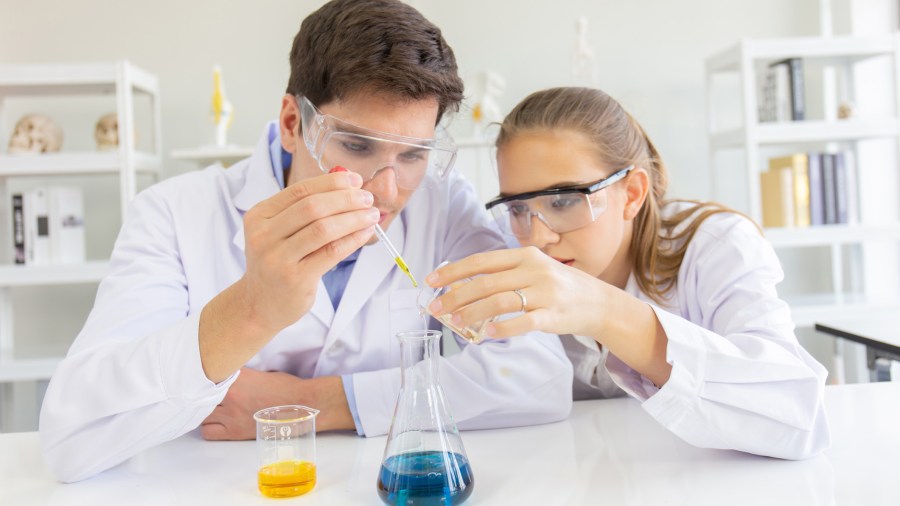The Reviewers Guide to Quantitative Methods in the Social Sciences

If yous've ever had a smashing thought for something new, so you know some testing is necessary to work out the kinks and make sure you go the desired effect. When information technology comes to developing and testing hypotheses in the scientific world, researchers use an eight-step process known every bit the scientific method to prove or disprove ideas that could ultimately pb to more concrete scientific theories.
Aristotle was the offset known person to suggest using observation and experimentation to prove various hypotheses proposed by scientists, philosophers and mathematicians. Over time, his initial ideas were tweaked and improved until they evolved into what we know today as the scientific method. Before you tackle your adjacent science experiment, let'southward take a look at the steps yous demand to include to validate your findings.
Observation (Steps Ane Through Four)
The steps that make upwardly the scientific method generally fall into three phases: ascertainment, experimentation and conclusion. The kickoff four steps in scientific inquiry all fall into the ascertainment phase and include initial observations, asking questions, gathering information and forming hypotheses. The concept is simple: Before y'all can behave any experiments, y'all must first observe something in nature that raises questions and prompts you lot to consider new ideas or solutions to a trouble. In many cases, step ane takes place without whatever conscious effort on the part of the observer.

Later on observing something that catches your eye, you may decide you desire to know more about information technology, which requires yous to ask a question. Example questions could relate to why something happens or what makes it occur. Asking a relevant question is the second step in the scientific method.
Adjacent, yous want to do some research to find the answer to the question. For case, if yous are wondering why plants respond to sunlight, you would want to thoroughly research the topic of photosynthesis and perform your own experiments to increase your understanding. The research yous deport is the backbone of step three. In some cases, you may discover evidence already exists to reply the question without any further endeavor on your role, only your ain research could atomic number 82 you in a new direction and aggrandize on what you already know.
Once you lot have made an observation, asked a relevant question and carried out your ain research, you can consummate step four by developing a hypothesis based on everything you learned. Think of a hypothesis as an educated guess. It's based on what seems to exist true based on preliminary evidence, simply it hasn't been conclusively proven to exist true.
More Virtually a Hypothesis
The hypothesis is one of the cornerstones of the unabridged scientific method. It doesn't offer proof when first presented, but it does crave researchers to analyze the express prove available and use audio logic and reasoning to describe potential conclusions. The bodily statements are typically written in an if/then format, with scientists predicting the outcomes of future experiments or the causes of particular events. They unremarkably brand these predictions based on the results of their own initial research.

Despite a common misconception, a hypothesis is non the same thing as a theory. If a hypothesis is tested, and the outcome is favorable — in other words, the scientist's initial educated gauge was proven right — so it could eventually get a much more concrete theory. Typically, a hypothesis is tested several times and past different scientists before it can be classified every bit a theory. It'south also common for scientists to combine several different hypotheses to develop a single working theory.
Experimentation (Step Five)
In one case the ascertainment stage is complete, things typically go a piffling more hands-on in the experimentation stage. Every bit the name would imply, this phase involves conducting tests designed to (hopefully) show a hypothesis. At this point, scientists and researchers assemble their inquiry, their hypotheses and perchance fifty-fifty their imaginations and use it all to conduct experiments.

The types of experiments conducted could take many different forms. Some include simple observation of a subject area, such as a human or an animal, in their natural surroundings, while others are completely conducted in laboratories. In virtually cases, researchers will conduct the same experiments several times using different variables to try to prove their ideas are valid.
Conclusion (Steps Six Through Viii)
Once all the official data has been nerveless and recorded, it'due south time to initiate the conclusion stage by get-go analyzing all the information and and then forming a decision in footstep six. If the analysis indicates the results are inconclusive, researchers may choose to repeat certain experiments or conduct new ones.

If the results bespeak a definite conclusion, so that determination is reported in footstep seven to the scientific customs and possibly the public. Depending on the type of experiment and the results, researchers may even publish the results and the information in a peer-reviewed medical journal to ensure other researchers in the field are enlightened of the information.
Finally, the results of associated experiments and the conclusion drawn will continue to be evaluated (step 8) for potential modifications as new experiments are conducted and new testify emerges over time. This phase but stops if the conclusion is proven to be a scientific police (doesn't change over time), such as Newton'southward laws of movement.
faulkhimakinecity.blogspot.com
Source: https://www.reference.com/world-view/eight-steps-scientific-method-879574b02eaa700b?utm_content=params%3Ao%3D740005%26ad%3DdirN%26qo%3DserpIndex
Post a Comment for "The Reviewers Guide to Quantitative Methods in the Social Sciences"